In a 26 January 2013 canonwired podcast, Pastor Doug Wilson was asked about the fragmented state of Protestantism. One frequent objection to Protestantism is the fact that it has over 20,000 denominations. Pastor Wilson responded that if you look at the data in terms of tradition as opposed to independent polities, you will find Orthodoxy has 19 different traditions, Protestants have 21 different traditions (streams), and for Roman Catholics there are 16 different traditions. This answer gives one the impression that Protestants, Roman Catholics, and Orthodox are all in the same boat.
However, Pastor Wilson is confusing apples with oranges. His 21 Protestant groupings are based on theological differences among Lutherans, Presbyterians, Baptists, Methodists, Pentecostals etc. His 19 Orthodox groupings are based mostly on national jurisdictions, e.g., Greek Orthodoxy, Russian Orthodoxy, Bulgarian Orthodoxy etc. National Orthodox jurisdictions are of a very different nature from doctrinal differences between Protestant denominations.
In this blog posting I will sketch Protestantism’s theological divisions. Then I will compare its doctrinal disarray against Orthodoxy’s theological unity.
Baptism and the Lord’s Supper
One of the first major divisions occurred over the Lord’s Supper. In 1529 Luther and Zwingli met at the Marburg Colloquy seeking to come to a common understanding of Christ’s words: “This is my body.” Luther held to the real presence, while Zwingli preferred a more symbolic understanding. Unable to come to an agreement the two went their separate ways. Calvin held to a position somewhere between the two.
This difference over the real presence in the Lord’s Supper continues to divide Protestants. Many Evangelicals and Baptists will side with Zwingli, while the more traditional or high church Protestants will side with Luther (if properly nuanced). The significance of the Marburg Colloquy is that deep divisions emerged so soon among the original Reformers despite their adherence to sola scriptura. Theological division is not a later development but present from the start.
Baptism was another cause for division. Lutherans and the Reformed Christians continued the practice of baptizing infants, while the Anabaptists rejected infant baptism insisting that only those old enough to understand the meaning of faith were to be baptized. The Anabaptist movement began in 1523 in Zurich and spread to many parts of Europe. The Baptists we know today can be traced to seventeenth century English Separatism. Their refusal to recognize infant baptism or baptism by sprinkling divides the Baptists from more historic Protestants. Some Protestants have experienced the pain of being excluded from Holy Communion at a Baptist church just because they had not been baptized by total immersion. And those who wish to join a Baptist church will need to be rebaptized by total immersion.
Conclusion: The majority of Protestants reject Roman Catholicism’s seven sacraments for two sacraments: baptism and the Lord’s Supper. The reducing of the number of sacraments to just two rather than promoting unity resulted in divisions among Protestants.
Church Government
Under Elizabeth I the Anglican Church and the Via Media (Middle Way) was established in the mid 1500s. Via Media was a compromise between Roman Catholicism and the more radical Protestants influenced by Calvin’s Geneva. The English Puritans objected to the retention of the episcopacy and its close ties with the monarchy. Two novel forms of church government emerged from this: presbyterianism and congregationalism. Presbyterians believe that the local congregation is to be governed by presbyters (elders) elected by the people of a congregation or by a group of congregations. Congregationalists reject the notion of a state church. Following the “gathered church” principle, they insist that the church should consist only of those who responded to the call of Christ and who covenanted with Christ and each other to live as Christ’s disciples.
The Holy Spirit and Religious Revivalism
There is within Protestantism, especially Puritanism, a strong emphasis on a personal experience of God’s grace. The Halfway Covenant controversy that troubled the New England colonies in the mid 1600s was over whether those who professed faith in Christ and lived upright lives but had had no conversion experience were to be admitted into full church membership. In the mid 1700s there emerged a movement of New England Congregational preachers who insisted on the possibility of an instantaneous or sudden conversion experience attended by emotional and mystical features known as “New Lights.” These were resisted by those who believed that faith in Christ did not require a dramatic experience and that the baptism administered to infants was efficacious provided that it was accompanied by diligent catechesis. In the mid 1800s John Williamson Nevin in The Anxious Bench criticized the emotional approach to religious conversion being popularized by the frontier revivals. From the frontier revivals of the 1800s we see the origins of the emphasis being “born again” prominent among many Evangelicals and Baptists today.
Similar to the emphasis on instantaneous conversion was the emphasis on instantaneous or entire sanctification. The Holiness movement which emerged in the mid 1800s sought to preserve John Wesley’s teaching that through a powerful instantaneous and emotional experience, distinct from the initial conversion, one who became cleansed from inbred sin was enabled to live without conscious or deliberate sin. This emphasis gave rise to the Holiness Churches, the Church of the Nazarene, and many other smaller groups.
A new religious movement emerged from this emphasis on the Holy Spirit, Pentecostalism. This movement which emerged at the turn of the century emphasized speaking in tongues as the sign that one had received the Holy Spirit. Pentecostalism has exerted a wide and powerful influence on twentieth century Protestantism. What was initially considered a bizarre sect in time became accepted in many mainline churches through the charismatic renewal. Its expressive form of worship laid the foundation for the contemporary worship services found in many congregations.
We find here three quite different approaches to Christian conversion and faith in Christ: (1) the more traditional churches that accept infant baptism and view faith as trusting in Christ, (2) those who insist that becoming a Christian requires having undergone a distinct conversion experience and that baptism is only valid for those who had such an experience, and (3) those who believe that having a born again experience while necessary is not sufficient and that one needed to have received the baptism in the Holy Spirit with the sign of speaking in tongues. These differences are more than doctrinal. They touch upon the issue of who was a genuine Christian and who was not. These questions generated strong emotions on both sides often resulting in church splits and new church groups being formed.
Liberalism Versus Fundamentalism
With the rise of modern science and the Enlightenment, Western Christianity faced a new challenge, knowledge based on autonomous reason. The historical critical method of studying the Bible and the quest for the historical Jesus caused many to question and rethink traditional doctrines. Many Protestant theologians, pastors, and denominational leaders began to jettison traditional beliefs like the divine inspiration and authority of Scripture, the Virgin Birth, the bodily resurrection of Christ, and even that of Jesus’ divinity!
This gave rise to theological liberalism, an attempt to forge a new theology compatible with the insights and findings of modern science. Others resisted the attempt viewing naturalism as incompatible with the traditional Christian worldview. This gave rise to conflicts between the theological conservatives that sought to hold on traditional doctrines and the theological liberals that sought to adapt theology to the new knowledge being generated by modern science. In contrast to previous theological schisms that more or less remained within the confines of Christianity, theological liberalism resulted in many churches and denominations parting ways from the historic Christian Faith.
This is not to say that ‘conservative’ Protestantism resisted the temptation to syncretism. The controversial ‘word of faith’, prosperity gospel, and holy laughter teachings, while immensely popular today have gone beyond the boundaries of historic Christianity. The contemporary Christian music and the seeker friendly/church growth movement have taken much of Evangelical worship away from the historic pattern of Christian worship. And ironically, in a post-modern reaction to the excesses of modern Evangelical worship the ancient-future movement surfaced in an attempt to reconnect with the ancient Christian tradition lost by modern Evangelicalism.
Protestantism and Orthodoxy Compared
In his attempt to describe Protestantism as consisting of 21 groupings or traditions, Pastor Doug Wilson glossed over the serious doctrinal divisions among Protestants. This is where the contrast between Orthodoxy and Protestantism is most evident.
Core Doctrine – All of Orthodoxy share in the doctrines of the Trinity and Christology as defined by the Ecumenical Councils; Protestants, on the other hand, range anywhere from the classical Reformed and Lutherans who adhere to traditional Christology to the liberals who question or even reject the divinity of Christ or seek to redefine the Trinity using inclusive language – with more than a few denominations lying somewhere in between.
Worship – All of Orthodoxy carefully follow a select few ancient liturgies received from the historic Church; Protestantism has no common pattern or unity of worship. Rather than rely on Tradition, they sought to create their own liturgies based on their reading of the Bible. Protestant worship follows a broad spectrum from liturgical Anglican and Lutheran services, to sermon focused services characteristic of Evangelicals and Baptists, to the more emotionally expressive services among charismatics and Pentecostals.
Church Government – All of Orthodoxy agree that proper church government requires a bishop who is in apostolic succession; the vast majority Protestantism have no bishops in any historic sense. Where the early Church only had one kind of polity: episcopal, Protestantism allows for all kinds: episcopal, presbyterian, and congregational. In a disturbing development some of the Third Wave charismatic churches have claimed to have restored the office of the apostles!
Sacraments – All Orthodox share a common understanding of the historic sacraments. They all affirm the real presence in the Eucharist. There are different understandings about the need to baptize converts from Protestant and Roman Catholic churches. Among Protestants there is no unity over infant baptism or the mode of baptism. Neither is there a shared understanding about how often a church should observe the Lord’s Supper, the real presence, and who is authorized to celebrate the Lord’s Supper.
It has been claimed that Protestants do in fact enjoy Eucharistic unity. But given the widespread belief that Holy Communion is just a symbol, intercommunion among Protestants has become all but disconnected from doctrinal orthodoxy and moral discipline. In the glaring light of this fact, claims to Eucharistic unity among Protestants sound hollow to Orthodox Christians.
Conclusion: The sad fact is that Protestantism today has no unifying core beliefs, no shared pattern of worship, on top of its many denominations founded on these divisions. From what I know of Pastor Wilson, he takes doctrine seriously. However, he does his listeners a horrendous disservice by ignoring this scandalous reality. What is compelling many Evangelicals to take a serious look at Orthodoxy is not merely the fractured state of Protestant theology and the widespread apostasy among liberal mainline denominations, but also the accelerating pace of doctrinal innovations among the younger generations of Evangelicals.
Protestantism’s Doctrinal Disarray
When I was a member of the liberal mainline United Church of Christ (UCC), a friend made a joke about the fact that if you walked into a room of 30 people at a UCC conference you would find 30 theologies in that room. While intended to be humorous, the joke also underscored a very sad fact about the theological health of a denomination in decline. Similar tensions have surfaced in the Episcopal Church and the Presbyterian Church (USA).
When I studied at Gordon-Conwell Theological Seminary the majority of the students there were conservative Evangelicals. There was much common ground among us students but the sad fact was that there was no common worship life at Gordon-Conwell. There was a chapel service but that was sparsely attended. Once a month the students would meet with their fellow denomination members, but there was little interest in reconciling denominational differences during these meetings.
This is not to say that there are no differences among Orthodox Christians. We differ over following the new church calendar versus the old church calendar of fast and feast days. I have friends who attend an old calendar Russian Orthodox parish. But while they celebrate Christmas two weeks later than the Greek Orthodox, I can receive Holy Communion if I were to visit that parish. As far as multiple administrative jurisdictions in America, we all agree that it is contrary to canonical law. I don’t know of any Orthodox bishop or priest who believe that multiple jurisdiction is God’s will. Steps have been taken to prepare the way for another council.
The multiplicity of administrative jurisdictions has not destroyed or precluded the fundamental liturgical and Eucharistic unity among world Orthodoxy. In Honolulu I attend the Greek Orthodox Church; on occasion I will visit the nearby ROCOR parish. When I visit the mainland I usually attend an OCA or Antiochian Orthodox parish. Also, we recently had an OCA priest who moved to Hawaii and was assigned to the local ROCOR parish and who would fill in for the Greek Orthodox priest when he went on vacation. So those who point to the problem of multiple jurisdictions are overlooking the Eucharistic unity that we all share and our desire to live out our unity in Christ.
Schism can be healed. When I became Orthodox in 1999, I was discouraged from visiting the Russian Orthodox Church Outside of Russia (ROCOR) parish. This was because ROCOR saw the Moscow Patriarchate as collaborating with the Soviet regime and broke off ties with them. That schism was healed in 2006. As far as the schism between Orthodox and Oriental Orthodox I remain cautiously optimistic. Whenever I visit a nearby Coptic church I can sense of family resemblance that I do not have when I visit a Roman Catholic or Anglican parish. One positive sign is that the Copts have been sending students to the Greek Orthodox Holy Cross Seminary. Another positive sign of possible reconciliation is the fact Coptic Christians can receive the Eucharist at an Orthodox church when there is no Coptic church in the area. This is an exception made on a case by case basis and requires the blessing of the bishop.
One could point to the various splinter Orthodox groups. A Wikipedia article on Orthodoxy has three categories: (1) those in full communion, (2) traditionalist schisms, and (3) nationalist schisms. The best way to deal with this complex situation is to ask: What do we mean by Orthodox unity? Unity in Orthodoxy is organic and relational. The Eucharistic unity that all Orthodox share in is not just in the body and blood of Christ, it is also a communion among Orthodox bishops around the world and goes back to the Apostles. It is not enough for a church group to put the name “Orthodox” on its door; it must be in communion with the ancient patriarchates. It is a sad and unfortunate fact that human nature being what it is has resulted in individuals and groups leaving the one holy catholic and apostolic Church. But based on what the Nicene Creed teaches we believe that there has always been one Church, not two parts. This view means that if one leaves the one holy catholic and apostolic Church, the Church remains intact but one has become outside the Church. One way of locating this one holy catholic and apostolic Church is to see who is in communion with the ancient patriarchates.
There was a group of sincere Christians who called themselves the “Evangelical Orthodox Church.” There is no patent, to my knowledge, on using the word “Orthodox.” Similarly, there are many cults who call themselves “Christians.” Yet as the Evangelical Orthodox grew in maturity and understanding, they learned that to be Orthodox in the historic sense meant entering into canonical communion with the historic Orthodox patriarchates. So, they did. (See chapter 10 “A Decade of Decision” and chapter 11 “Welcome Home!” in Peter Gillquists’ Becoming Orthodox.)
Inquirers will need to confront two questions: (1) Do I agree with the Nicene Creed’s “I believe in one holy catholic and apostolic Church?” and (2) Where do I find this one holy catholic and apostolic Church? I don’t think they will find it in Protestantism.
Conclusion
When I entered into Orthodoxy I found a common faith and a common worship. I close with two quotes: one from the second century church father, Irenaeus of Lyons, and another from a contemporary Orthodox blogger, Vincent Martini. Irenaeus wrote:
Having received this preaching and this faith, as I have said, the Church, although scattered in the whole world, carefully preserves it, as if living in one house. She believes these things [everywhere] alike, as if she had but one heart and one soul, and preaches them harmoniously, teaches them, and hands them down, as if she had but one mouth (Against Heresies 1.10.2, Richardson 1970:360).
Vincent Martini wrote:
An Orthodox Christian in America can travel to any Orthodox church in Greece, Russia, or Serbia, experiencing the same liturgy, prayer, and piety that they are accustomed to in their “home” church, while sharing full eucharistic fellowship with every single one of them. (“How Many Different Orthodox Churches Are There?”)
Despite the nearly two thousand years that separate Vincent Martini from Irenaeus of Lyons, we see the same Orthodox Faith.
When we compare Protestantism against Orthodoxy we will find that very little has changed with respect to Orthodoxy. Orthodox unity is based on the stability of Holy Tradition. All Orthodox share the same core doctrines, the same worship, and the same Eucharist — as did our Fathers in the centuries before us – and as will our grandchildren in the generations to come. But Protestantism is not grounded in the stability of Holy Tradition but in the quest for a reformed church ever reforming. This has resulted in constant change and flux from the time of Luther and Calvin till now. Neither the most historic high church denominations nor its low church evangelical or charismatic counterparts will be able to guarantee that its grandchildren will worship or believe as they did.
Robert Arakaki
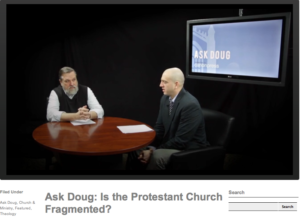
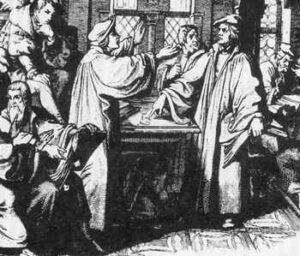




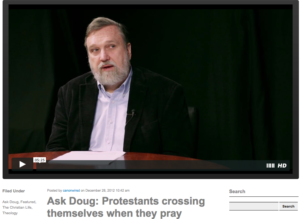

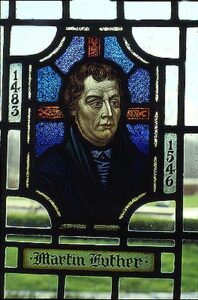
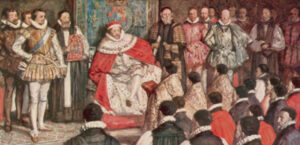





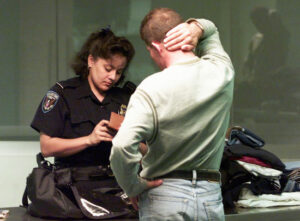


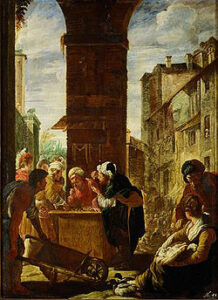
Recent Comments